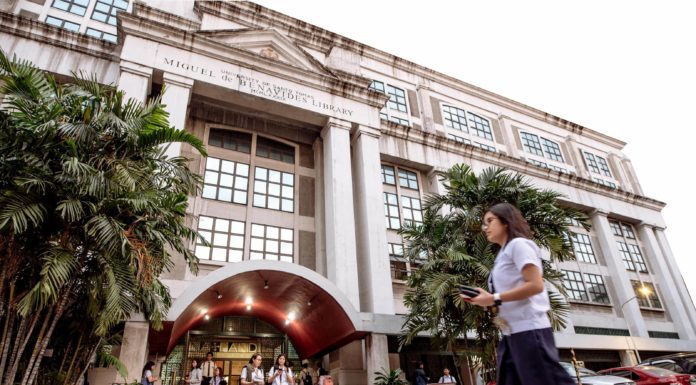
THE SHRINE of Our Lady of Manaoag, the Dominican pilgrimage
site in the Archdiocese of Lingayen-Dagupan, was formally proclaimed a minor
basilica last Feb. 17.
The proclamation rites were led by Manila Archbishop Luis
Antonio Cardinal Tagle, Cotabato Archbishop Orlando Cardinal Quevedo, Manila
Archbishop Emeritus Gaudencio Cardinal Rosales, Apostolic Nuncio to the
Philippines Giusseppe Pinto, Lingayen-Dagupan Archbishop Socrates Villegas, and
60 bishops.
It was on Oct. 11, 2014 when Villegas announced on Facebook
that Pope Francis had elevated the historic shrine to a minor basilica.
In his homily during the proclamation Mass, Tagle said the
elevation of a church as a minor basilica was “a sign of the church’s
recognition,” not only of deep history, but spiritual patrimony. It is a
reminder that a church effectively manifests God’s desire to dwell with His
people, he added.
“Ibig ng Diyos na tumira sa gitna ng Sambayanan. Kaya ang
tawag sa simbahan ay Bahay ng Diyos at
bahay ng lahat ng anak Niya. Kapiling natin Siya at makakauwi tayo sa
Kaniyang tirahan,” Tagle said.
Tagle said the elevation of the shrine to a minor basilica
was also a call to the faithful that they should not pray for themselves alone.
“We don’t only pray to Mary, we pray with Mary. In this place, pray for others
than for yourself,” he said.
For a shrine to be declared a minor basilica, there must be
“some particular historical and religious event” and a “sacred image venerated
in a special way,” a document promulgated by the Congregation for Divine
Worship and the Discipline of the Sacraments in 1989 stated.
The image of Our Lady of Manaoag has drawn pilgrims from all
over the world because of miracles dating to 400 years ago. Pilgrims regard her
as the patroness of the sick, protector of the helpless, and benefactress of
the needy.
According to Fr. Jerry Manlangit, O.P., rector of the
Manaoag Shrine, the proclamation carried extra significance because Manaoag
became the first basilica in Pangasinan.
“[This] Shrine has been here for hundreds of years. The
Manaoag Shrine is rich in spirituality, culture, and devotion. For years, it
has sustained the deep faith of the Filipino people, especially for those who
are praying through the intercession of the Virgin Mary,” Manlangit said in a
phone interview with the Varsitarian.
The shrine now carries the material privileges of a minor
basilica—the right to use umbracullum or a baldachin resembling an umbrella,
and the tintinnabulum, a bell, as well as the right to use the papal symbol of
the crossed keys.
“The umbracullum, which resembles a half-open umbrella,
symbolizes that as a minor basilica, we are always waiting for the coming of
the Pope. If the Pope comes here, he will open the umbrella fully, while the
bell is a clear manifestation that the minor basilica offers liturgical
services that the people may avail for themselves,” Manlangit said. “The
crossed keys symbolize that this pilgrim site is protected by the Vatican.”
Aside from material privileges, the Shrine also carries a
plenary indulgence, or the “remission of the entire temporal punishment due to
sin.”
During the proclamation, the jeepney-type popemobile, used
during Pope Francis’ visit to Manila, was made available for viewing in front
of the shrine.
The Manaoag Shrine is also an affiliate of the Papal
Basilica of Santa Maria Maggiore in Rome.
It was in 1614 when the Augustinians transferred the
administration of the shrine to the Dominican friars. The Holy See granted the
spiritual administration of the shrine in perpetuity to the Dominican Order in
1925.
The original ivory icon of Our Lady of Manaoag was brought
by the Augustinians in 1590. It was canonically crowned in 1926. Canonical
coronation means that the Holy See has officially recognized the favors granted
by Our Lady of Manaoag to devotees throughout the centuries.
Aside from the Basilica of Our Lady of the Rosary of
Manaoag, the country has 12 minor
basilicas including the Minor Basilica of the Immaculate Conception or the
Manila Cathedral, the Minor Basilica of the Black Nazarene in Quiapo, and the
Minor Basilica of San Lorenzo Ruiz or Binondo Church. Angeli Mae S. Cantillana

















